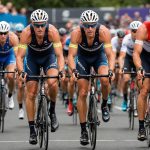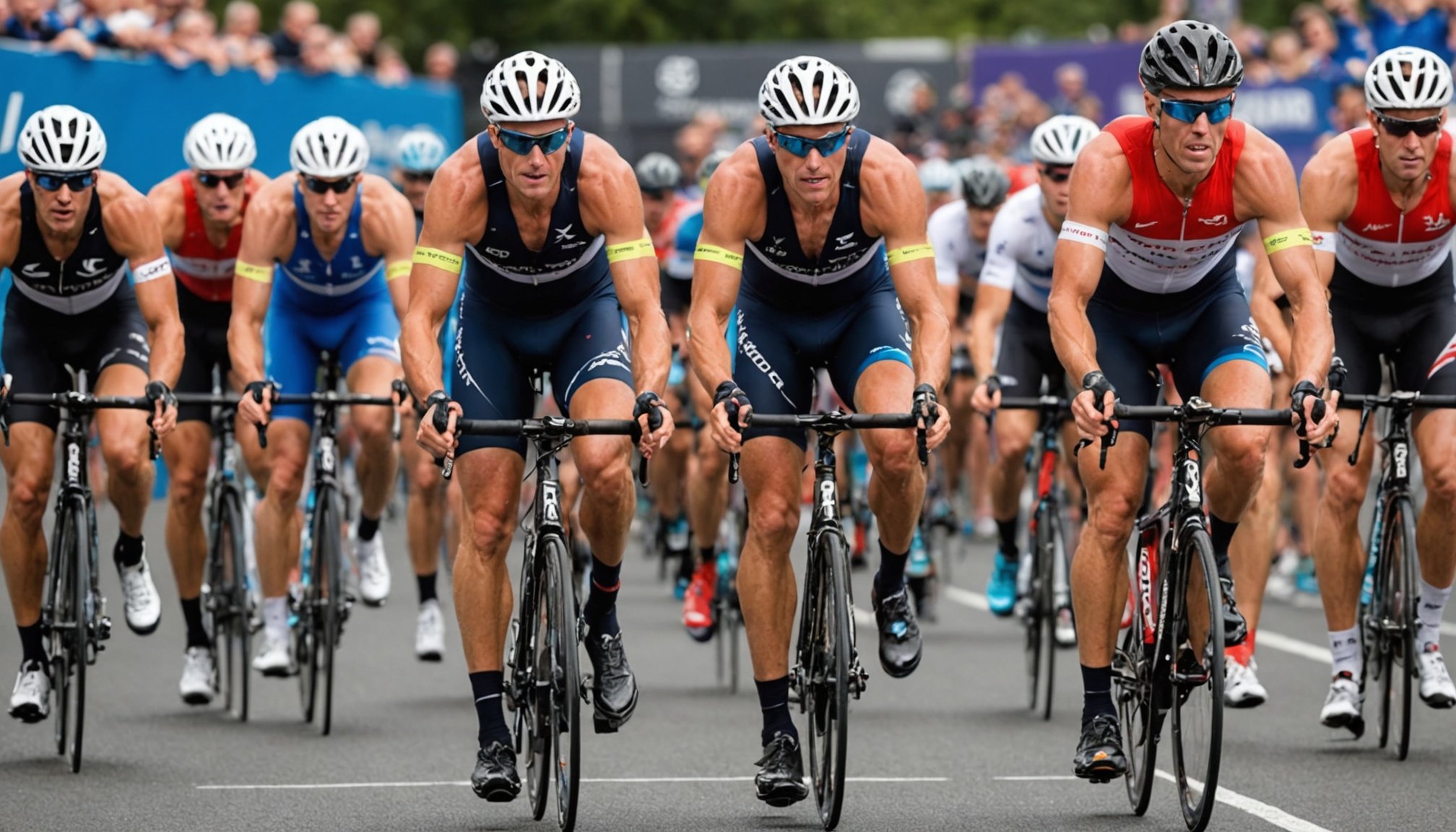Understanding Triathlon Basics
Triathlons are composed of three primary components: swimming, cycling, and running. Mastery of these disciplines is essential for anyone looking to pursue triathlon training. Each segment requires unique skills and training approaches, which make integrating them into a cohesive training plan both challenging and rewarding. The unity of these sports ensures that athletes achieve balanced fitness.
For UK athletes, training can pose specific challenges. Weather conditions, such as rain and cold temperatures, often affect outdoor practice sessions, particularly for swimming and cycling. Moreover, coordinating training times with the country’s often unpredictable conditions can be tricky. Therefore, it’s vital for athletes to adapt and adopt flexible strategies.
Also to see : Fostering tomorrow”s leaders: how uk youth sports initiatives cultivate leadership abilities in young athletes
By focusing on comprehensive race day preparation, integrating insights into training methods, and understanding the intricacies of each sport, athletes can overcome these hurdles. Familiarity with each discipline’s demands enhances overall performance and reduces the likelihood of injuries. Additionally, embracing the combined challenge of these three sports leads to more robust endurance and diverse skill set, setting athletes up for success.
Creating a Balanced Training Schedule
Crafting a balanced training schedule is fundamental for triathlons. Effectively structuring weekly sessions across swimming, cycling, and running ensures optimal results. A typical week might involve a mix of disciplines, carefully tailored for individual fitness goals and levels. Key to success is acknowledging the body’s need for rest. Incorporating rest days is essential, allowing for recovery and preventing injuries.
Also to read : Enhancing defensive strategies: utilizing game film insights for uk volleyball teams”
Customising your workout plan improves its efficacy. Identify core strengths and areas needing improvement, and adjust accordingly. You might consider shorter swim sessions if running is your forte or focus on hill sprints if cycling needs strengthening. This bespoke approach harnesses athletes’ unique capabilities, enhancing overall performance.
A diverse workout plan benefits both physical stamina and mental resilience. It prevents monotony by introducing varied drills and intensities. Remember, progression doesn’t necessitate daily exertion. Prioritising recovery enriches each training session, turning rest into an active component of your regime. Balancing intensity with downtime fosters sustainable development, supporting peak performance on race day.
Essential Swimming Techniques
Mastering swimming techniques is pivotal for triathletes aiming to excel. Key drills to enhance stroke efficiency include the catch-up drill, which improves body position and balance, and the fist drill, focusing on proper hand placement and propulsion. These exercises are indispensable for boosting speed and form. Effective breath control, attainable through regular practice and right techniques, is also crucial; it enhances endurance, enabling longer, more efficient swimming.
Open water swimming presents unique challenges, particularly in UK conditions, characterised by cold temperatures and choppy waters. Adapt by training in similar environments and learning bilateral breathing to cope with waves and improve sighting. Wearing appropriate wetsuits can mitigate cold effects and enhance buoyancy.
To withstand lengthy races, building endurance through consistent training is essential. Incorporate distance swims in training plans to gradually build stamina. Remember, integrating swimming tips effectively into your regimen not only enhances speed but also prepares you for the diverse demands of triathlon swimming segments. Embrace the water and conquer it with these strategies, ensuring you’re race-day ready.
Cycling Strategies for Performance
Developing a well-rounded cycling strategy is crucial for triathletes aiming for peak performance. Incorporating tailored cycling techniques into bike training helps build necessary strength and stamina. Among recommended workouts, hill repetitions and interval training are particularly effective, enhancing both power and endurance. These workouts target muscle groups essential for long cycling segments, thus elevating overall performance.
The UK’s diverse terrains pose both a challenge and an opportunity for building resilience. Athletes should adapt their training to varied landscape conditions, such as flat roads, inclines, and rugged paths, to become proficient across different scenarios. This adaptive approach prepares them for unpredictability during races, ensuring they can maintain their pace regardless of the terrain.
Maintaining bicycles is pivotal for both safety and performance efficiency. Regular checks, including chain lubrication and brake adjustments, are crucial for smooth operation. Selecting gear suited to specific training environments also plays a significant role. High-quality jackets for rainy conditions or helmets built for aerodynamics can provide competitive advantages, offering comfort and protection simultaneously. By attending to these details, athletes improve their cycling outcome, ultimately enhancing their triathlon experience.
Running Form and Endurance Building
Optimising running form is crucial for triathletes striving for efficiency and endurance. Focus on maintaining a slightly forward lean and a high cadence, which helps reduce impact and improve running efficiency. Engaging the core and keeping shoulders relaxed are additional form enhancements that aid in longevity during races.
Incorporating varied workouts, like interval training and long runs, bolsters endurance and speed. Interval training improves cardiovascular health by alternating short bursts of high intensity with rest periods, enhancing performance. Long runs, on the other hand, are essential for building stamina, a key component for handling triathlon distances.
Pacing strategies are vital during races, especially given the unpredictable UK weather. Start at a manageable pace to conserve energy for later stages. Adjust your pace according to conditions; for instance, running conservatively during rain prevents fatigue. Familiarising yourself with weather impacts during training helps refine these strategies.
Embrace running as an opportunity to refine skills and strategy. Implementing these tips not only enhances performance but also minimises injury risk and optimises overall race experience. Begin integrating these into your routine and witness improvements in resilience and capability.
Recovery Techniques for Triathletes
To ensure optimal recovery and maintain peak performance, triathletes must incorporate effective cooldown routines. After intense sessions, engage in light activities like walking or dynamic stretching to gradually lower heart rate and reduce muscle stiffness.
Nutrition plays a pivotal role in recovery. Consuming a combination of proteins and carbohydrates within 30 minutes post-exercise aids muscle repair and glycogen restoration. Hydration is equally vital—ensuring regular water intake prevents dehydration, which can impair recovery.
Injury prevention is also integral. Implementing strength training focused on stabilising muscles can thwart common injuries. Foam rolling and stretching are beneficial for alleviating muscle tension. Techniques such as these promote flexibility, which is crucial for enduring rigorous training demands.
Dealing with common aches, like shin splints or knee pain, requires targeted strategies—resting affected areas and applying ice can reduce discomfort. Regular check-ins with a physiotherapist offer further insights into body mechanics and help tailor a personalised approach to pain management.
Ultimately, focusing on recovery methods not only aids in injury prevention but also enhances overall athletic performance, ensuring triathletes are physically prepared to tackle the demands of their sport.
Nutritional Guidance for Optimal Performance
For triathletes, maintaining a balanced diet is paramount to support intense training schedules and attain optimal results. Essential nutrition tips focus on a harmonious blend of proteins, carbohydrates, and healthy fats to fuel long sessions and speed up recovery.
Pre-Race Nutrition
Before competitions, effective meal planning plays a vital role in energy management. A carbohydrate-rich diet a few days before the race can load muscles with glycogen, providing a ready energy source. Emphasising low-fibre, easily digestible meals on race morning helps prevent gastrointestinal distress, ensuring you start at your best.
For effective performance, consider these strategies:
- Carbohydrate-loading: Boosts energy levels by topping up glycogen stores.
- Hydration: Maintain consistent water intake leading up to the event.
Post-Training Recovery
Post-training meals are crucial for muscle repair. Protein aids in muscle recovery, while carbohydrates replenish glycogen depleted during exercise. Consuming these nutrients within 30 minutes post-exercise maximises recovery efficiency. Hydration also plays a key role in recuperation; it maintains fluid balance and optimises performance by preventing cramps and fatigue.
By integrating these nutritional principles, triathletes can enhance endurance, improve performance, and ensure they are ready for every race and training session.
Preparing for Race Day
Preparing for race day requires a blend of strategic planning and mental readiness to perform optimally. Implementing effective race day tips is crucial for success. Start with developing a solid competition strategy: know the route, check the weather forecast, and plan pacing to match conditions. This forethought helps ensure you’re ready for any surprises.
Logistics can significantly impact your performance. Arrive early at UK events to avoid last-minute stress. Understanding the location of transition areas reduces confusion and saves valuable time. Assemble an equipment checklist a day prior to ensure nothing is forgotten. Key gear, such as shoes or goggles, can determine the smoothness of your transition.
Mental preparation is as critical as physical training. Engage in visualization techniques, imagining yourself successfully navigating each discipline. This practice builds confidence and focuses your mindset. A positive outlook, combined with structured preparations, enhances race-day readiness.
Harness these strategies to develop a routine that suits your personal needs. This way, you not only minimise stress but also increase the likelihood of reaching your goals and enjoying the race experience. Take control of your preparation for a solid performance.
Equipment Essentials for Triathlons
Having the right triathlon gear is crucial to ensuring a smooth and successful race experience. Each discipline of the triathlon—swimming, cycling, and running—requires specific equipment that caters to the sport’s unique demands. For swimming, a well-fitting wetsuit enhances buoyancy and insulation, particularly necessary in the UK’s cooler waters. Goggles with an anti-fog feature are also essential for clear visibility.
For the cycling segment, investing in a reliable bike suited to varied UK terrains is critical. A sturdy helmet, aerodynamic cycling attire, and a toolkit for minor repairs complete the checklist. Don’t overlook the importance of cycling shoes that clip into pedals, offering increased power transfer and efficiency.
When it comes to running, the focus should be on selecting the right pair of shoes that provide adequate support and cushioning, tailored to the specific foot type and terrain. Breathable attire that adapts to weather variations, such as moisture-wicking fabrics, is also beneficial.
An equipment checklist helps ensure nothing is missed in preparation for a race. Prioritising quality products within this list not only boosts performance but also enhances comfort and safety, pivotal for achieving optimal race outcomes.











